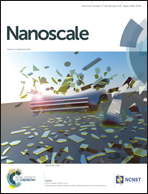Photoelectron transport tuning of self-assembled subbands†
Abstract
Conventionally, electrical transport of quantum subbands occurs at very high electric fields, indicating that the medium is easy to break down. In the experiments and practical applications, the extreme condition is difficult to satisfy. For quantum information transmission, low power consumption and convenient implementation are what we expect. In this paper, we engineered a special quantum dot array (QDA) embedded in a single crystal matrix. By external optical field excitation, we found a series of subbands made of the self-assembled QDA discretely located in the matrix. Changing the spacing between the quantum dots leads to the variation of subband spacing. Artificially manipulating the microcosmic QDA system can bring interesting macroscopic effects, such as an enhanced absorption intensity in the ultraviolet range, a blue-shift of the surface plasmon resonance peak and nonlinear absorption changed from two-photon absorption to saturated absorption. The intrinsic mechanism of the subband optical response was revealed due to the strong quantum confinement effect and dominant intraband transitions. The weak surface plasmon resonance absorption of Ni QDA gave an excellent figure of merit of the order of 10−10. The composite films are expectation enough to become a prime candidate for nonlinear applications near 532 nm. Therefore with interplay of the weak optical field and subbands, we achieved a tunable photoelectron transport process.


 Please wait while we load your content...
Please wait while we load your content...